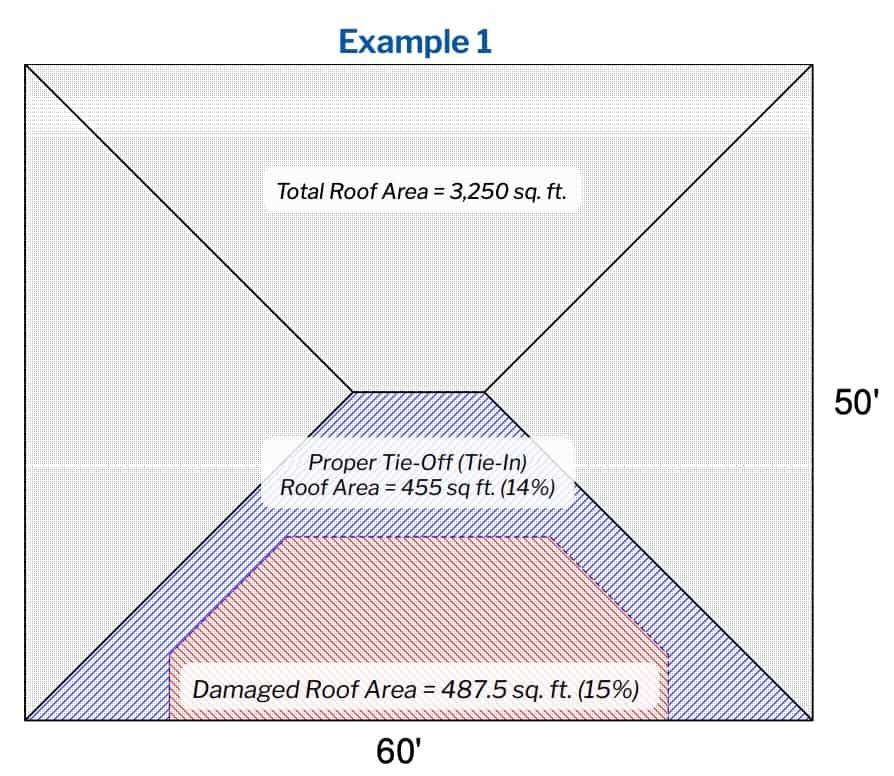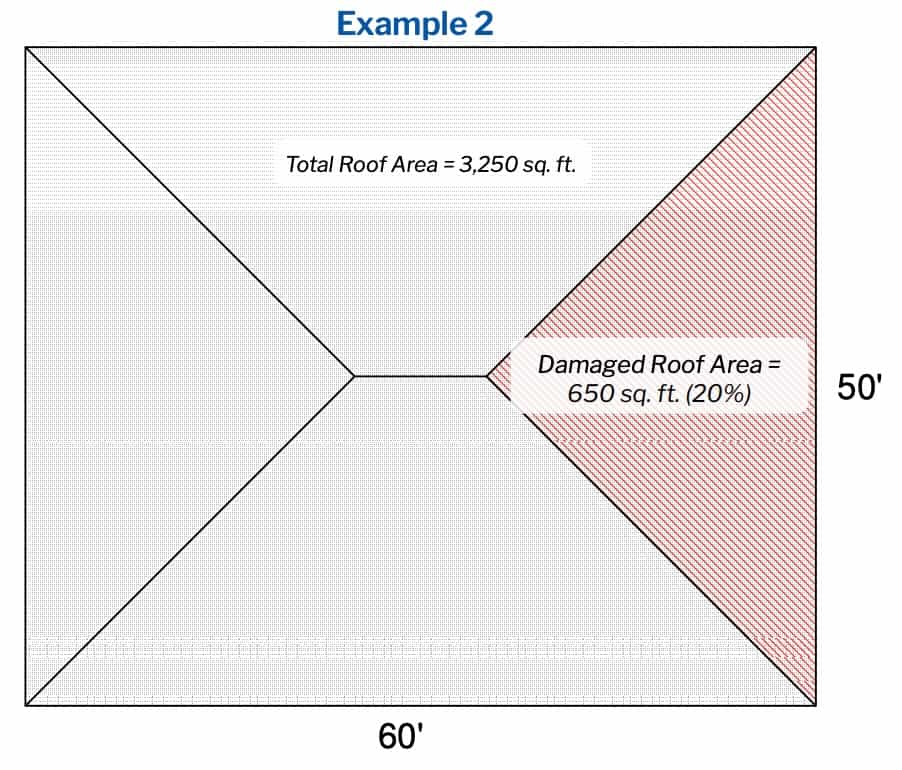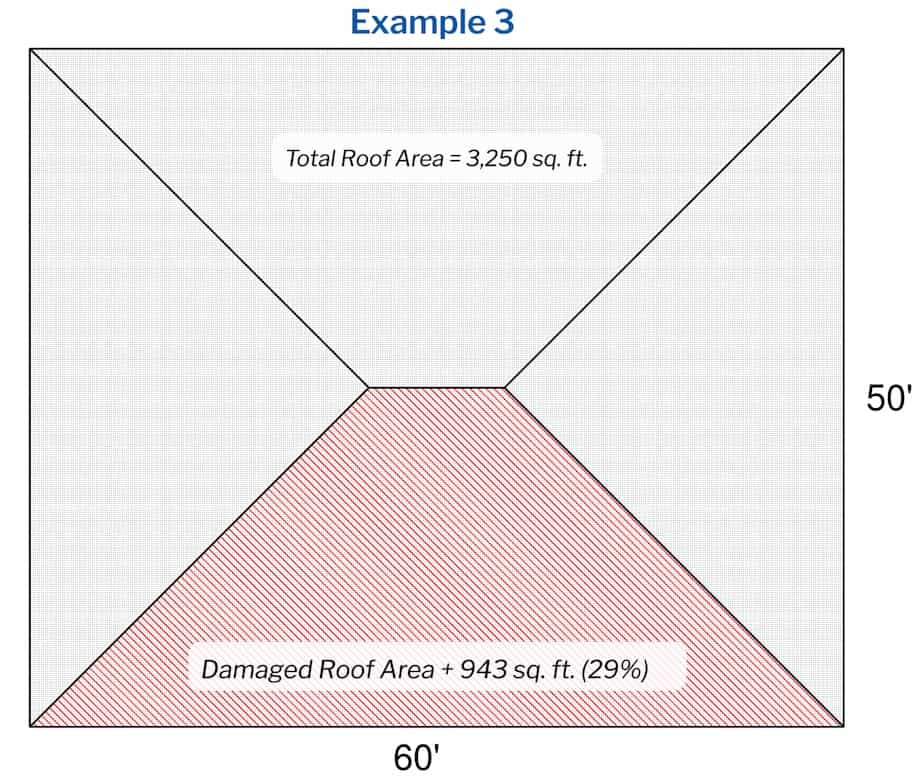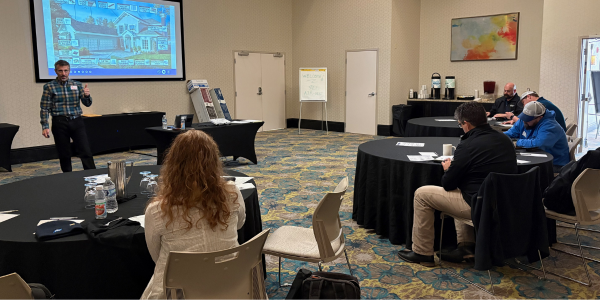Florida’s 25% Rule to Assess Damaged Roofs

By All Points Tile and Slate.
Understanding roofing guidelines is important in ensuring the safety and longevity of roofs after a storm.
While Florida’s sunny climate attracts tourists and residents year-round, hurricane season lasts from June to November and can have detrimental effects on homes. To help assess damage and protect the durability of roofs, the 25% rule can help determine when it is time to replace a roof system. The 25% rule is a guideline put in place for assessing the amount of damage a roof can withstand before needing to be repaired or replaced. Both homeowners and roofing contractors should understand these guidelines to ensure that roofs are properly maintained.
Mike Silvers, the technical director of the Florida Roofing and Sheet Metal Contractors Association (FRSA), covers the 25% rule in more detail in the FRSA Roofing Magazine. He answers frequently asked questions and provides examples of the rule in action. We wrote the following article to give a base-level understanding of the 25% rule to help homeowners and new roofing businesses understand the basics of replacing or repairing a roof.
What is the 25% rule?
The 25% rule in roofing is often assumed to mean that if 25% of a roof is damaged, it needs to be repaired, recovered or replaced. This interpretation is incorrect because the rule does not reference damage at all.
“Not more than 25 percent of the total roof area or roof section of any existing building or structure shall be repaired, replaced or recovered in any 12-month period unless the entire existing roofing system or roof section is replaced to conform to requirements of this code.”
To simplify, this means that a commercial or residential building that needs more than 25% of its roof repaired, replaced or recovered, the entire roofing system or roof section must be brought up to code. The 25% rule has a 12-month limit on repairs and replacements. Suppose 25% of the total roof area or roof section has been repaired or replaced within 12 months. In that case, insurance will not cover additional work or repairs. The exception to the 12-month limit is if the entire roofing system or roof section conforms to code requirements.
What is the 25% rule?
A roof section is an independent part of the roof – structurally or legally – from the rest of the roofing area. Sections or divisions are separated by:
- Existing expansion joints
- Parapet walls
- Flashing (excluding valley)
- Elevation (excluding hips and ridges)
- Roof type
- Legal description
Remember that roof sections do not include the roof area required for a proper tie-off (or tie-in) with an existing system. Roofing Technical Advisory Committee offers the examples below, originally posted in Florida Roofing in June 2021, where “the 455 square foot area needed for a proper tie-off would not apply when calculating the 25 percent threshold.” In this example, a complete replacement of the roof is not required.

Repairs often require additional work with undamaged components. These areas fall under the 502.3 “Related Work” guideline section. They are considered part of the repair and are not subject to other provisions of the 25% rule. To clarify further, if more than 25 percent of a roof section is affected, only that section needs to be brought up to code.
Examples of the rule in action
An example of the 25% rule in action would be a roofing professional inspecting a home after a severe weather event, such as a hurricane, has caused damage to the roof. The roofing professional would measure the extent of the damage and calculate the percentage of the total roof area affected. If the damage exceeds 25%, the roofing professional would recommend replacing the entire roof rather than just repairing it.
Another example could be a homeowner who notices some damage to their roof and calls a roofing professional for an inspection. The roofing professional would again measure the extent of the damage and apply the 25% rule to determine whether a repair or replacement is necessary.
For visual representation, the first example below does not fall into a full roof replacement. Only 650 square feet (20%) of the 3,250 square foot total roof area has been damaged. In this example, only the damaged room section (650 square feet) needs to be replaced.

Alternatively, the second example does fall into a complete roof replacement. 943 square feet (29%) of the 3,250 square foot total roof area has been damaged. Because over 25% of the total roof area has been damaged, the entire roof needs to be replaced to meet code requirements.

These examples highlight the importance of the 25% rule in ensuring that damaged roofs are repaired or replaced correctly, minimizing the risk of further damage and costly repairs down the line.
Florida’s matching law concerning the 25% rule
Following the 25% rule in roofing, Florida also has the matching law. Where roof repairs or replacement is necessary, the matching statute provides that if an insured property is damaged, then the items used to make repairs must reasonably match those used in adjoining areas.
The matching statute states:
“Unless otherwise provided by the policy, when a homeowner’s insurance policy provides for the adjustment and settlement of first party losses based on repair or replacement cost, the following requirements apply: When a loss requires replacement of items and the replaced items do not match in quality, color or size, the insurer shall make reasonable repairs or replacement of items in adjoining areas.”
The restoration of a roof to its pre-damaged state is what homeowners and business owners expect (and deserve). This type of restoration can be complex for insurance companies and contractors, as many tile companies have been bought out or discontinued a large selection of their roofing materials. When these situations occur, or if the shingles used in the repair cannot match the rest of the roof or roofing section, the entire roof will likely be replaced.
Insurance companies are prone to fighting against the matching law for the increased cost of locating discontinued tiles. Without the matching statute, insurance companies could repair a policyholder’s roof with any tiles they want and only repair items directly damaged by a covered loss. This kind of practice, however, leads to mismatched tiles, which depreciate the value of a home or business’ value. And, let’s be frank, it just doesn’t look good.
2023 revisions to the 25% rule
Roofers and property insurance companies often disagree regarding roofing repairs and replacements. Denial of roofing work by insurance companies frequently leads to delayed repairs and installations. Insurance companies question whether to raise rates due to inflamed or fraudulent insurance claims.
Time is money, and money is lost by homeowners, business owners, insurance companies and state funds through this vicious cycle.
Calls for code revisions came up in Florida’s legislative session in March 2022 without significant reform measures. If enacted, these regulatory changes will be in use in 2023. The most notable revision provides an exception to roofing builds, repairs and replacements that were built to the 2007 Florida Building Code (or subsequent codes) where:
“25 percent or more of such roofing system or roof section is being repaired, replaced or recovered, only the repaired, replaced or recovered portion is required to be constructed in accordance with the Florida Building Code in effect, as applicable.”
It’s important to note that the 2007 Florida building code was not enacted until March 2009. This makes assessing the installation date difficult for insurance companies and contractors without a deeper look into the permits submitted at the time of work.
25% rule
The 25% rule is being called for revision by roofing contractors who believe that the 25% rule prevents them from installing long lasting roofs. The Roofing and Sheetmetal Contractors Association proposes an exception to the 25% rule that would consider the roof material’s age.
With Florida’s severe weather, especially during hurricane season, roofing repair or replacement is common. Homeowners also look into replacing the roof on newly purchased homes every few years, which has dropped the longevity of roofs.
Under the 25% rule in past years, roofs less than nine years old are generally not replaced. The proposed change takes these nine years into account. It reads:
“Replacement of the entire existing roof or roof section is not required if the existing roof covering was permitted and installed in compliance with this code or the two previous versions of the Florida building code.”
Roofing contractors and home insurance companies note that the existing rule does not consider the longevity of most roof materials. Roofing materials are made to last for decades, making repairs or replacing serviceable materials costly for homeowners and insurers.
Confirmed revisions to the rule apply (or will apply) to FBC Building 1511.1.1, FBC Residential 908.1.1 and FBC Existing Building 706.1.1. These changes will go into effect December 31, 2023, and read:
“Not more than 25 percent of the total roof area or roof section of any existing building or structure shall be repaired, replaced or recovered in any 12-month period unless the roof covering on the entire existing roof system or roof section is replaced or recovered to conform to the requirements of this code.”
Simply put, the confirmed revision eliminates prohibiting recovering an entire building or anything more than 25% of the building or roof section. There is debate whether the confirmed and proposed consideration of roof age will help protect contractors, insurance companies and homeowners from bad actors.
Matching law
There is room for interpretation with the current wording of “unless otherwise provided in the policy.” Policymakers look to place limits on matching costs with a provision where the extent of repairs or replacement will be based on
- the cost of repair or replacing undamaged portions of the property
- the degree of uniformity that can be achieved without such cost
- the remaining useful life of the undamaged portion
The provision would further stipulate that replacements can be more generous but not less generous. Simply, the cost of repair materials cannot be less than the cost of the same or similar tile replacement.
Provide and advise
The change in the legislature was made to assist in attracting and retaining property insurers to Florida and reduce the use of the 25% rule to justify (often unnecessary) roof claims. False claims have put a negative stigma on the roofing industry. The muddled wording used in the legislature for roofing claims doesn’t help either. With so much confusion around the 25% rule in roofing, it’s difficult to know whom you can trust, what you can repair, replace or install, and what company you can go to fulfill your roofing needs.
Original article source: All Points Tile and Slate
Learn more about All Points Tile & Slate in their Coffee Shop Directory or visit www.allpointstile.com.





















Comments
Leave a Reply
Have an account? Login to leave a comment!
Sign In